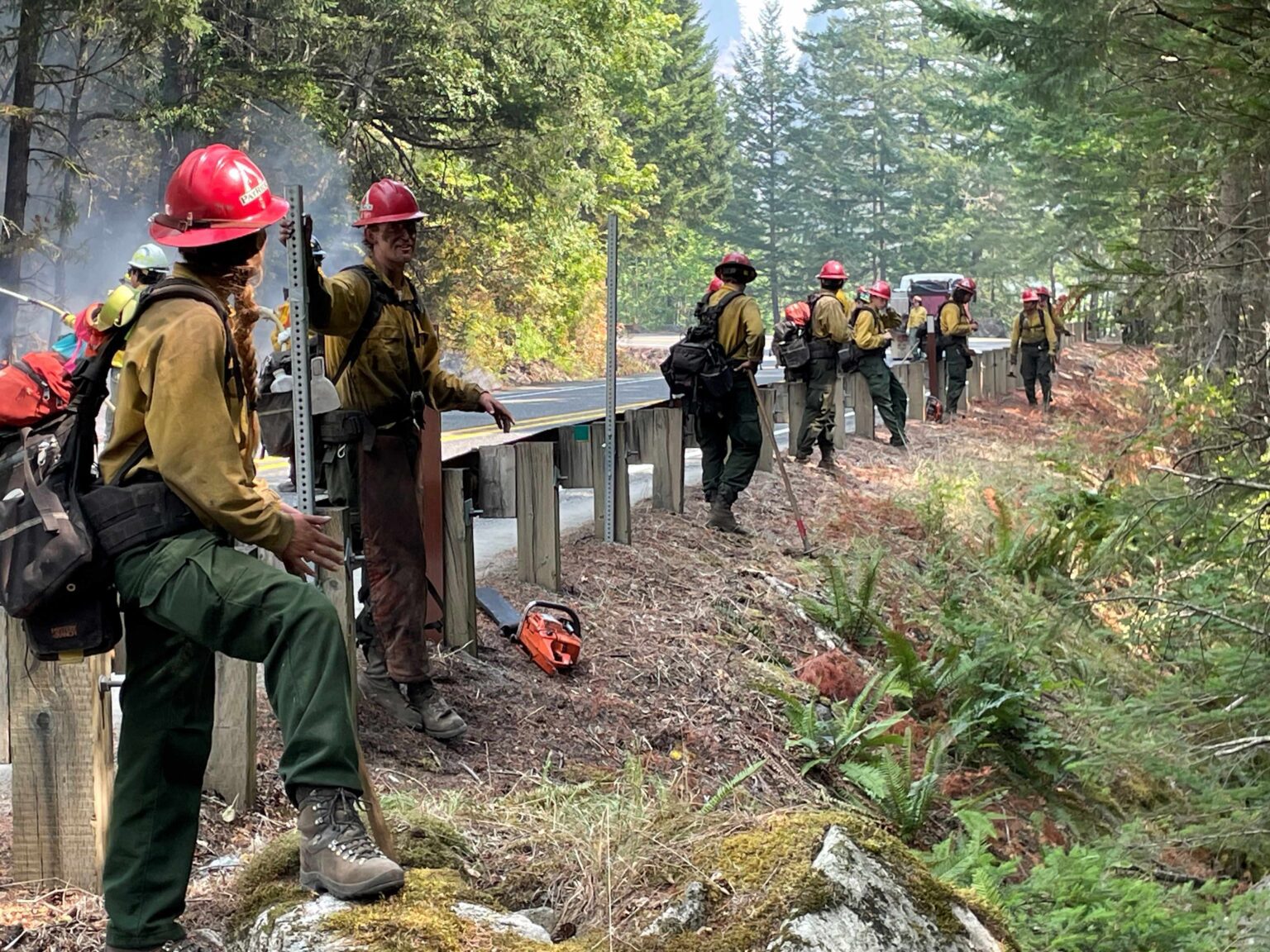An extended stretch of unseasonably hot, dry weather in Northwest Washington has firewatchers and health officials on high alert, from the Cascade crest all the way to the Salish Sea.
On the mountain side, an accurate size for the Sourdough wildfire, located in a remote part of North Cascades National Park near Highway 20, has been unavailable since Tuesday, Aug. 15, when it was estimated to be 2,953 acres.
Since Tuesday, firefighters and on-the-ground personnel have been unable to calculate the fire’s growth due to the unavailability of an infrared flight.
As a result of the spreading fire, the North Cascades Environmental Learning Center has extended its pause on programs until Monday, Sept. 4.
Hot, dry temperatures and strong winds in the North Cascades have helped spread the fire, as it creeps through the steep terrain to the 2015 Goodell burn scar. A total of 387 personnel — spread across six hand crews, five water tenders, seven helicopters and 20 engines — are battling the spreading fire.
Whatcom County leaders declared an emergency for the area Friday, Aug. 11, as the fire is “unpredictable and is not expected to end until winter rains.”
The lightning-sparked fire, burning along Sourdough Mountain in the Ross Lake National Recreation Area since late July, has been a challenge for firefighters as the steep terrain limits on-the-ground action, and tumbling branches, twigs and even rocks have carried the fire further down the mountain.
Rocks, boulders and other large debris have reportedly fallen from the mountain onto state Route 20, closed since Thursday, Aug. 10. The road is now closed between milepost 120 in Newhalem and milepost 171 near Winthrop, due to the Sourdough fire and the recently sparked Blue Lake Fire.
The second fire, just 30 miles from the Sourdough fire, sparked additional closures in North Cascades National Park Tuesday, meaning there is no access to the national park or the Lake Chelan National Recreation Area from the Bridge Creek Trailhead, or via Blue Lake, Maple Pass or Twisp Pass.
Hot weather
The persistent hot weather, with highs in the 90s across Whatcom County, increased fire risk but also posed “a major risk for heat-related illnesses” for individuals without access to cooling or adequate hydration, according to the National Weather Service.
Early in the week, Puget Sound Energy — one of the largest utility providers in Washington — asked customers to reduce energy use during “peak hours” of the heatwave, in part to help reduce strain on the already stressed electric grid.
Whatcom County’s heat advisory was set to be suspended around 11 p.m. Thursday, Aug. 17, though the National Weather Service warned of increased fire activity along with “hot, dry and unstable conditions” in the region throughout the weekend.
Fire protections enacted
Whatcom County and the City of Bellingham have both instituted burn bans, prohibiting all outdoor fires where solid wood is used as fuel, Bellingham Fire Marshal Shawn Linville announced Wednesday, Aug. 16.
The county ban, which went into effect at 4 p.m. Wednesday, prohibits yard-debris fires and land-clearing fires, in addition to recreational fires.
On Tuesday, the Washington State Department of Natural Resources (DNR) announced a ban on campfires and permitted burns on DNR-protected lands throughout Northwest Washington due to the increasing wildfire risk.
The ban extends through Island, San Juan, Skagit, Snohomish and Whatcom counties, where DNR manages more than 387,000 acres of trust land.
“Our landscapes are already dry and only getting drier, and we’ve all felt the smoke in the air,” said Commissioner of Public Lands Hilary Franz. “I am asking everyone in Washington to do their part to protect our firefighters and our communities this summer. Please do not start a fire outside, so we can all breathe easier.”
Propane and butane camp stoves and backpacking stoves are still allowed as needed on the protected lands.
Campfire restrictions currently exist on all DNR-protected lands in Washington State.




